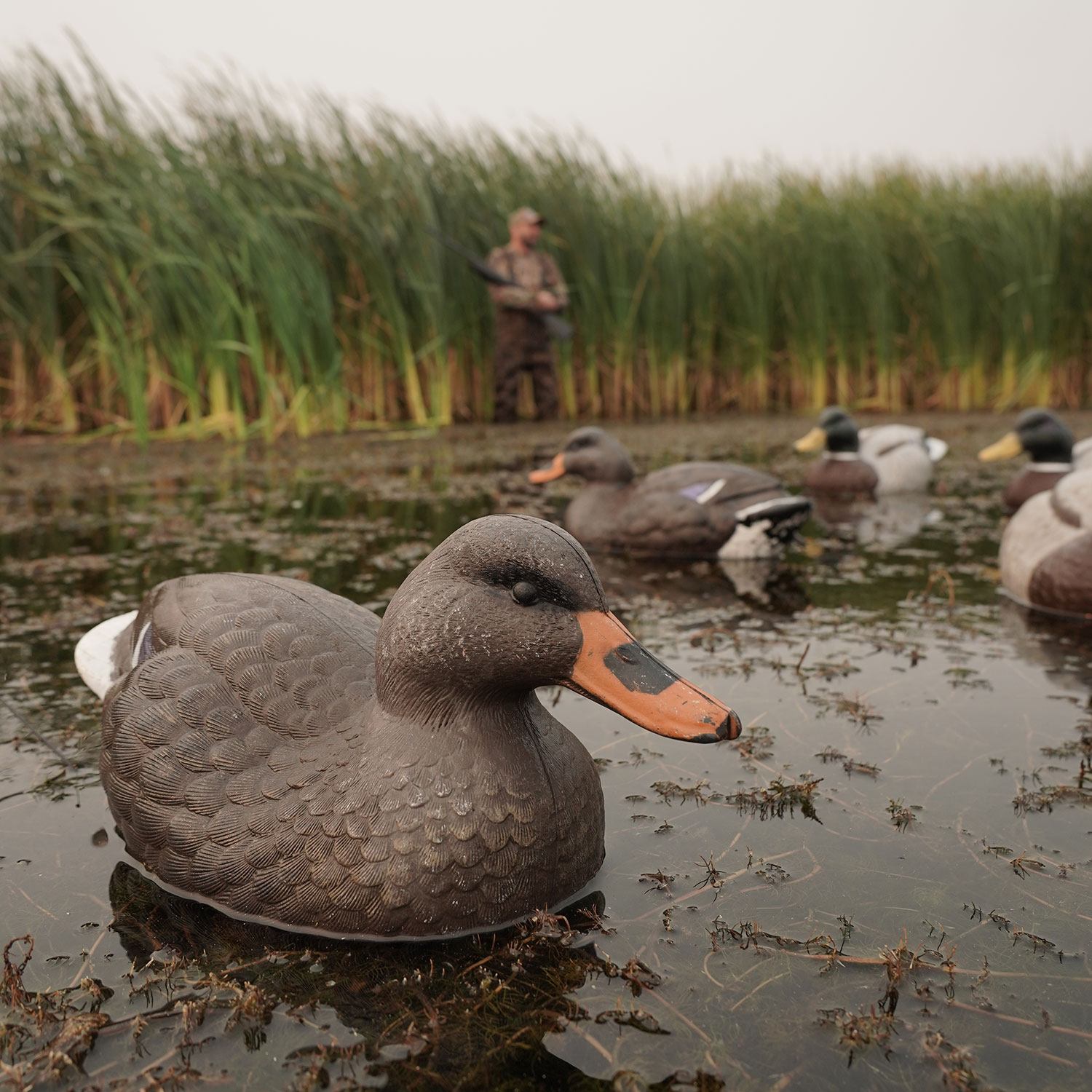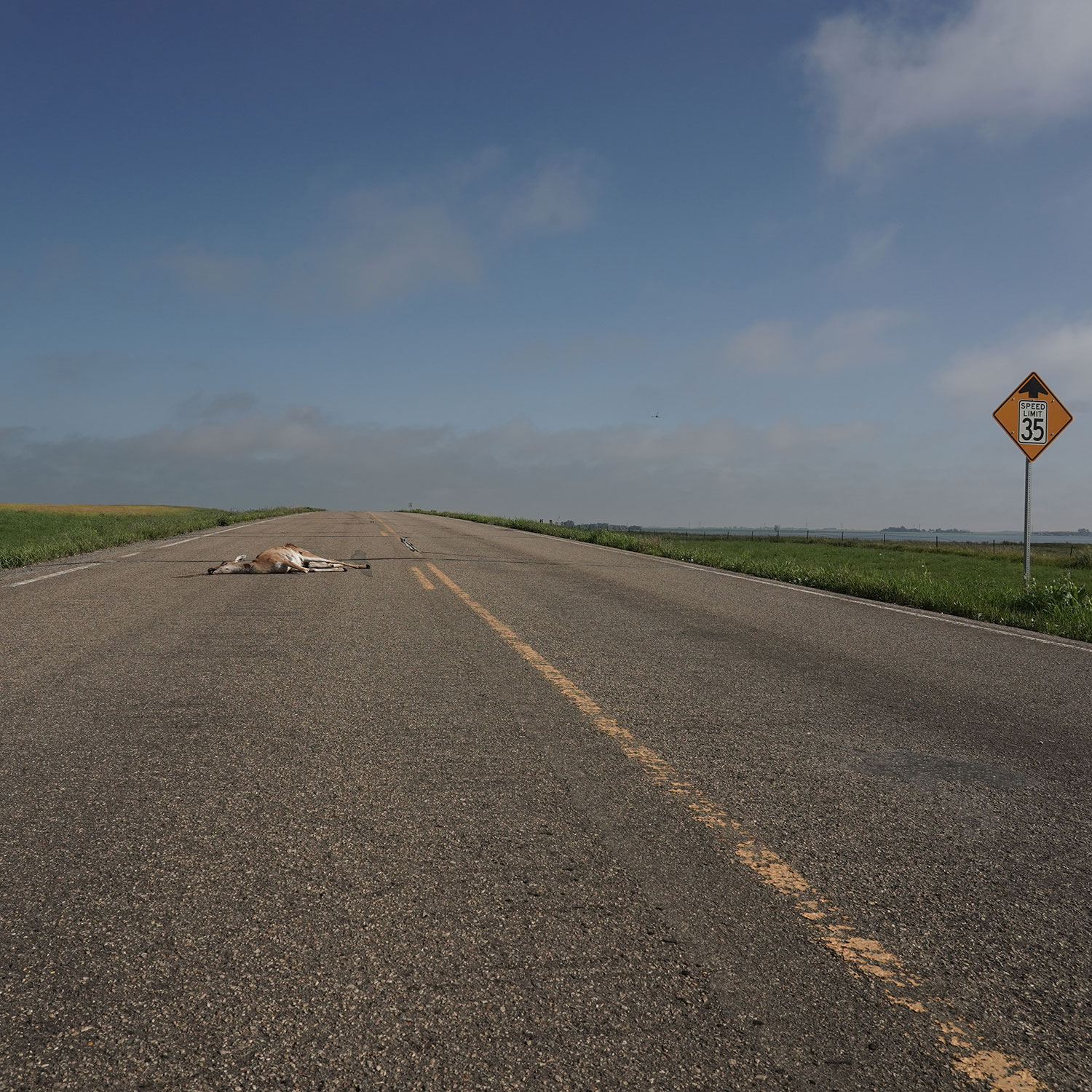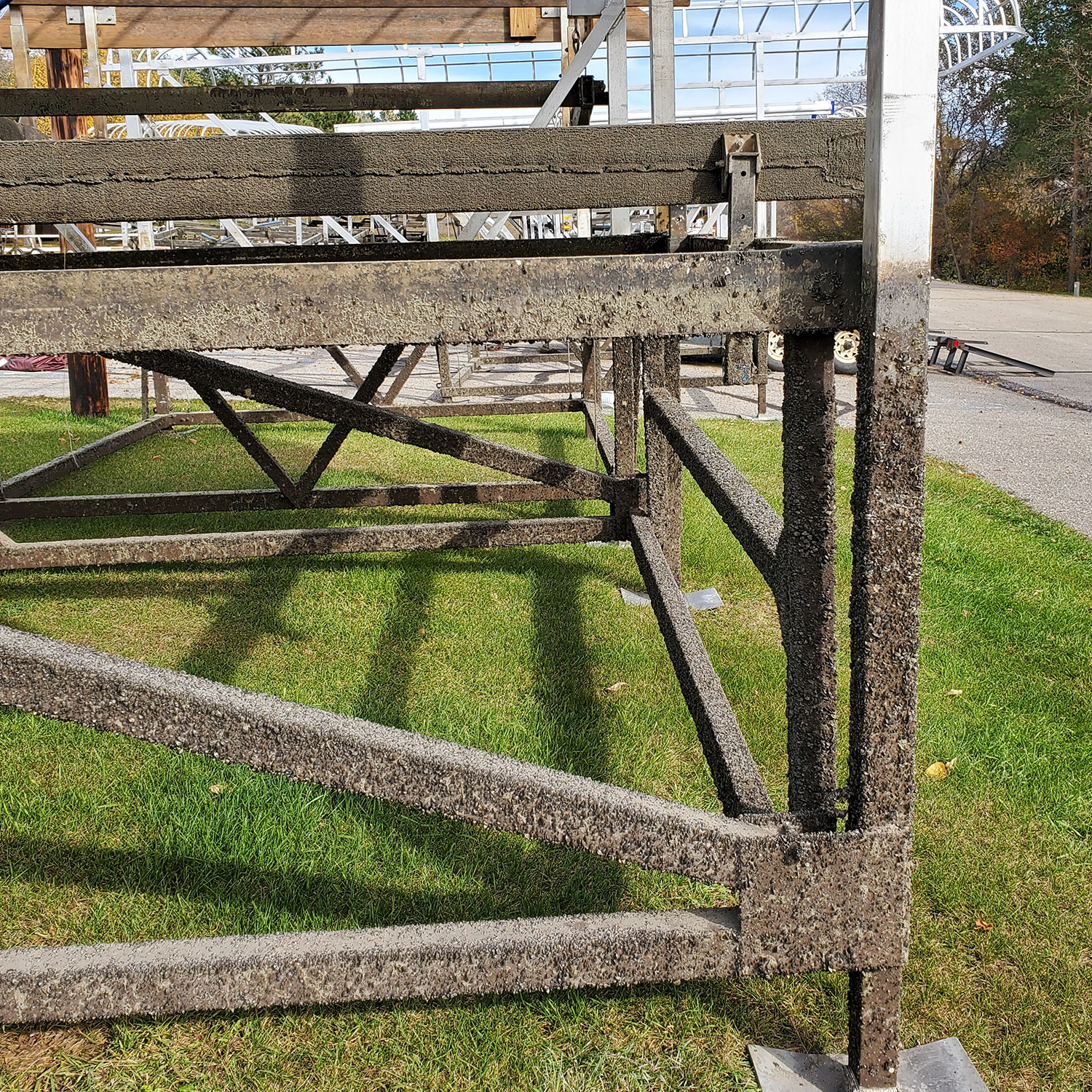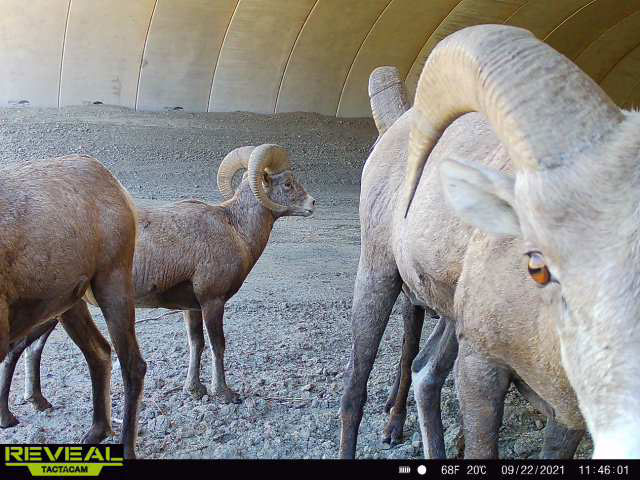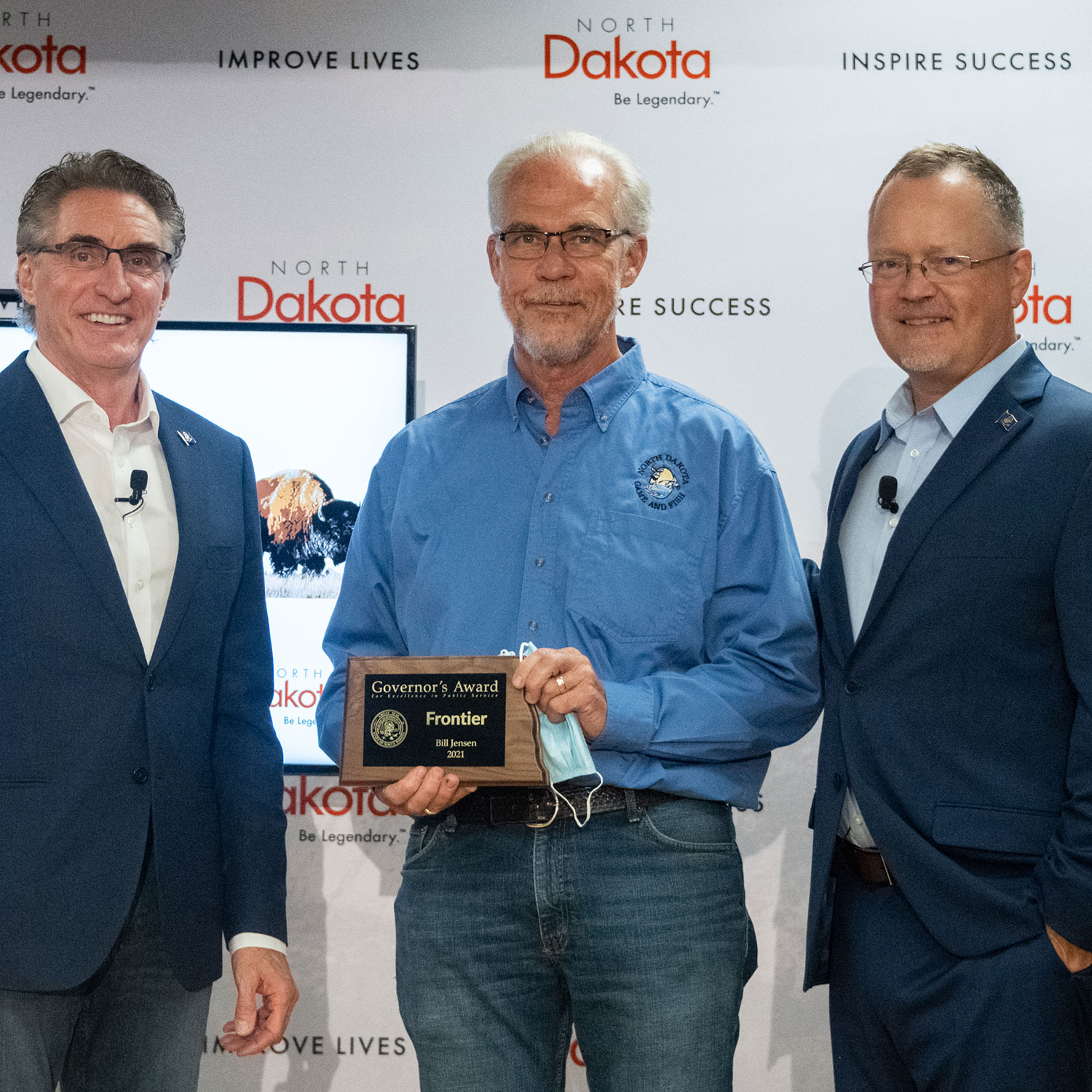North Dakota’s roadside surveys conducted in late July and August indicate pheasants were down from last year, while sharp-tailed grouse and gray partridge numbers were about the same.
Jesse Kolar, Game and Fish Department upland game supervisor, said results of the annual upland late summer counts were expected.
“Recent weather patterns have shifted toward a drier period, particularly this year with a warm, open winter and exceptional drought across much of the state,” Kolar said. “Hunters should expect to find similar numbers to 2020, with the exception that there will be fewer acres of typical grassland cover to walk.”
Total pheasants (45) observed per 100 miles was down 23% from last year and broods (5) per 100 miles were down 30%. The average brood size (six) remained unchanged. The final summary is based on 266 survey runs made along 102 brood routes across North Dakota.
Observers in the northwest counted eight broods and 68 pheasants per 100 miles, down from 10 broods and 80 pheasants in 2020. Average brood size was six. Results from the southeast showed three broods and 24 pheasants per 100 miles, down from five broods and 42 pheasants in 2020. Average brood size was four.
Statistics from southwestern North Dakota indicated six broods and 59 pheasants per 100 miles, down from seven broods and 65 pheasants in 2020. Average brood size was seven chicks.
The northeast district, generally containing secondary pheasant habitat with lower pheasant numbers compared to the rest of the state, showed three broods and 24 pheasants per 100 miles, compared to three broods and 22 pheasants last year. Average brood size was five.
Kolar said sharptail hunters should expect to find mainly adult grouse this fall. He said numbers along the Missouri River are still high compared to long-term averages, so hunters who can find cover should have average to good hunting. The eastern part of the state has fewer sharp-tailed grouse, with isolated hot spots.
“Many rangelands that hold grouse on an average year will be too open to hunt this fall, and most grouse will likely be found in shrubland and woodland draws and/or near riparian areas,” he said.
Sharptails observed per 100 miles were up 2% statewide. Brood survey results showed two sharptail broods and 19 sharptails per 100 miles. Average brood size was six.
Although partridge numbers have shown a slight increase, Kolar said most of the partridge harvest is incidental while hunters pursue grouse or pheasants. Partridge densities in general, he said, are too low to target.
Partridge observed per 100 miles were up 9%. Observers recorded one partridge brood and 10 partridge per 100 miles. Average brood size was 10.
The North Dakota Game and Fish Department confirmed the presence of invasive zebra mussels in Lake Elsie, Richland County, after a local cabin owner reported adult mussels attached to a boat lift in late summer.
Ben Holen, Department aquatic nuisance species coordinator, said follow-up sampling found zebra mussels at various locations and life stages throughout the lake. The 390-acre lake is a popular recreation destination located a few miles southwest of Hankinson.
Lake Elsie is now considered a Class I ANS Infested water, joining Twin Lakes, Lake LaMoure, Lake Ashtabula, the lower portion of the Sheyenne River, and the Red River in this designation. Emergency rules went into effect immediately to prohibit the movement of water away from the lake, including water for transferring bait. Notices are posted at lake access sites.
Zebra mussels are just one of the nonnative aquatic species that threaten our waters and native wildlife. After using any body of water, recreationists must follow North Dakota regulations:
- Remove aquatic vegetation before leaving the water access and do not import into North Dakota.
- Drain all water before leaving the water access.
- Remove drain plugs and devices that hold back water and leave open and out during transport.
- Do not import bait. For Class I ANS Infested waters, bait cannot be transported in water. In all other areas, bait must be transported in a container that holds 5 gallons or less. It is illegal to dump unused bait on shore or into the lake.
In addition to North Dakota regulations, the Game and Fish Department strongly recommends the following:
- Avoid mooring your watercraft in zebra mussel infested waters.
- Clean – remove plants, animals and excessive mud prior to leaving a water access.
- Drain – drain all water prior to leaving a water access.
- Dry – allow equipment to dry completely or disinfect before using again. This includes boat docks and boat lifts brought from other waters/states. A seven-day dry time is recommended after recreating on a zebra mussel infested water at typical summer temperatures. This includes boat docks and boat lifts brought from other waters/states.
For more information about ANS in North Dakota, options for disinfection, or to report a possible ANS, visit gf.nd.gov/ans.
Waterfowl hunters are reminded to do their part in preventing the spread of aquatic nuisance species into or within North Dakota.
Waterfowl hunters must remove aquatic plants and plant fragments from decoys, strings and anchors; remove aquatic plant seeds and plant fragments from waders and other equipment before leaving hunting areas; remove all water from decoys, boats, motors, trailers and other watercraft; and remove all aquatic plants from boats and trailers before leaving a marsh or lake. In addition, hunters are encouraged to brush their hunting dogs free of mud and seeds.
Cattails and bulrushes may be transported as camouflage on boats. All other aquatic vegetation must be cleaned from boats prior to transportation into or within North Dakota.
Drain plugs on boats must remain pulled when a boat is in transit away from a water body.
In addition, hunters are reminded of a state law that requires motorized watercraft, including motorized duck boats, operated on state waters and not licensed in North Dakota, to display an ANS sticker, including an ANS fee of $15 to be paid each calendar year.
More ANS information, including regulations, or to purchase the ANS sticker, visit the North Dakota Game and Fish Department website, gf.nd.gov.
Motorists should watch for deer along roadways this time of year because juvenile animals are dispersing from their home ranges.
October through early December is the peak period for deer-vehicle accidents. Motorists are advised to slow down and exercise caution after dark to reduce the likelihood of encounters with deer along roadways. Most deer-vehicle accidents occur primarily at dawn and dusk when deer are moving around.
Motorists should be aware of warning signs signaling deer are in the area. When you see one deer cross the road, look for a second or third deer to follow. Also, pay attention on roadways posted with Deer Crossing Area caution signs.
Deer-vehicle accidents are at times unavoidable. If an accident does happen, law enforcement authorities do not have to be notified if only the vehicle is damaged. However, if the accident involves personal injury or other property damage, then it must be reported.
In addition, a permit is required to take parts or the whole carcass of a road-killed deer. Permits are free and available from Department game wardens and local law enforcement offices.
A few precautions can minimize chances of injury or property damage in a deer-vehicle crash.
Always wear your seat belt.
Don’t swerve or take the ditch to avoid hitting a deer. Try to brake as much as possible and stay on the roadway. Don’t lose control of your vehicle or slam into something else to miss the deer. You risk less injury by hitting the deer.
If you spot deer ahead, slow down immediately and honk your horn.
The North Dakota Game and Fish Department is asking water recreationists and property owners to check for zebra mussels and other aquatic nuisance species when removing boat lifts, docks and other equipment from state waters.
Ben Holen, Department ANS coordinator, said water recreationists and property owners play a vital role in ANS prevention.
“Zebra mussels attach to hard surfaces that are left in the water for long periods of time, first settling in tight spaces and areas that are protected from sunlight,” Holen said. “Equipment such as boat lifts and docks are high risk vectors for spreading ANS, especially zebra mussels.
“It makes it easier to do a thorough search when equipment is taken out of the water in fall,” he continued. “Pay special attention to wheel wells, right angles on frames, and areas otherwise protected from sunlight. Feel for attached organisms that have small hair-like structures holding them in place. Small mussels can feel like rough sandpaper and adults can be as large as 2 inches long.”
Holen said if you think you’ve found a zebra mussel, take photos, write down any relevant information, such as how many were found and where, and report it online.
The North Dakota Game and Fish Department is taking orders for its 2022 North Dakota OUTDOORS calendar, the source for all hunting season and application dates for 2022. Along with outstanding color photographs of North Dakota wildlife and scenery, it also includes sunrise-sunset times and moon phases.
Order online or send $3 for each, plus $1 postage, to: Calendar, North Dakota Game and Fish Department, 100 N. Bismarck Expressway, Bismarck, ND 58501-5095. Be sure to include a three-line return address with your order, or the post office may not deliver our return mailing.
The calendar is the North Dakota OUTDOORS magazine’s December issue, so current subscribers will automatically receive it in the mail.
Waterfowlers hunting from boats are encouraged to wear properly fitted life jackets while on the water.
Hunting jackets with built-in life jackets are light and comfortable to wear. In addition, wearing a life jacket will not only keep the overboard hunter afloat, but also slows the loss of critical body heat caused by exposure to cold water.
Capsizing and falling overboard from small boats are the most common types of fatal boating accidents for hunters.
With North Dakota’s deer gun season opening in early November, many hunters will be looking for a place to sight in their firearms to get ready for the season.
The North Dakota Game and Fish Department manages five gun ranges on wildlife management areas in the state, and also partners with many local clubs around North Dakota to offer many other public shooting facilities.
The gun ranges managed by the Game and Fish Department include:
- Lewis and Clark WMA, located 6 miles southwest of Williston.
- Little Heart (Schmidt) Bottoms, located 12 miles south of Mandan off ND Highway 1806.
- MacLean Bottoms, located 2 miles south of ND Highway 1804, about 15 miles southeast of Bismarck.
- Riverdale WMA, located 2 miles southwest of Riverdale.
- Wilton Mine WMA, located 2 miles east of Wilton.
The Department may periodically close these ranges for routine maintenance and improvements. The status of each range can be found online. The website also provides a detailed listing of other shooting facilities in North Dakota.
Whooping cranes are in the midst of their fall migration and sightings will increase as they make their way through North Dakota over the next several weeks. Anyone seeing these endangered birds as they move through the state is asked to report sightings so the birds can be tracked.
The whooping cranes that do travel through North Dakota in fall are part of a population of about 500 birds on their way from nesting grounds at Wood Buffalo National Park in Canada to wintering grounds in Aransas National Wildlife Refuge in Texas, a distance of about 2,500 miles.
Whoopers stand about 5 feet tall and have a wingspan of about 7 feet from tip to tip. They are bright white with black wing tips, which are visible only when the wings are outspread. In flight, they extend their long necks forward, while their long, slender legs extend out behind the tail. Whooping cranes typically migrate singly, or in groups of 2-3 birds, and may be associated with sandhill cranes.
Other white birds such as snow geese, swans and egrets are often mistaken for whooping cranes. The most common misidentification is pelicans, because their wingspan is similar and they tuck their pouch in flight, leaving a silhouette similar to a crane when viewed from below.
Anyone sighting whoopers should not disturb them, but record the date, time, location and the birds' activity. Observers should also look closely for and report colored bands, which may occur on one or both legs. Whooping cranes have been marked with colored leg bands to help determine their identity.
Whooping crane sightings should be reported to U.S. Fish and Wildlife Service offices at Lostwood, 701-848-2466; Audubon, 701-442-5474; the North Dakota Game and Fish Department in Bismarck, 701-328-6300; or to local game wardens across the state. Reports help biologists locate important whooping crane habitat areas, monitor marked birds, determine survival and population numbers, and identify times and migration routes.
A wildlife crossing constructed to safely usher bighorn sheep and other big game animals from one side of U.S. Highway 85 to the other in western North Dakota is working. On Sept. 22, Game and Fish Department trail cameras photographed bighorns for the first time using the underpass located just south of the entrance to the North Unit of Theodore Roosevelt National Park near the Long X bridge. Mule deer, the first big game animals photographed in March 2021, have grown accustomed to the crossing. Game and Fish cameras, for example, documented 52 mule deer using the underpass in August.
Jensen Earns Governor's Award
Bill Jensen, North Dakota Game and Fish Department big game management biologist, was awarded in early September the 2021 Governor’s Frontier Award for continuous learning.
“Bill was recognized by Gov. Doug Burgum for his efforts over his career to continuously strive to use the best available science to help guide management of wildlife in North Dakota, including some of the most renowned species of big game that we are responsible for,” said Jeb Williams, Department director. “Bill has always been willing to go the extra mile, whether that means expanding his own knowledge base, diving into the literature, establishing cooperative working relationships within or outside the Department, or getting involved wherever needed.”
Jensen has worked for Game and Fish for more than 30 years and is a wealth of information about the ecology of big game and a go-to source for information pertaining to the history of big game management in North Dakota, Williams said.
“This is apparent when considering that during his tenure, Bill has authored or co-authored over 25 peer-reviewed journal articles, over 40 popular articles, countless agency reports and one book. He was the principal investigator on over 10 research projects, which included mentoring as many graduate and post-doctoral students,” Williams said. “Bill is the first individual from the Department to receive one of Gov. Burgum’s excellence in public service awards. A very fitting award for an individual who has dedicated his career to continuous learning.”
Anderson Appointed Wildlife Chief
North Dakota Game and Fish director Jeb Williams appointed 20-year department employee Casey Anderson as chief of the wildlife division.
“Casey has certainly proven himself as a leader,” Williams said. “His experience and communication skills will serve the agency well as wildlife chief.”
Anderson, assistant wildlife division chief since 2014, also held private land field coordinator and biologist positions.
A native of the Turtle Lake-Mercer area in McLean County, he has a bachelor’s degree in the fish and wildlife management option of zoology from North Dakota State University.
Fast New Graphic Artist
Kristi Fast of Mandan has been named the Game and Fish Department’s graphic artist in Bismarck.
Prior to accepting the position, Fast was a graphic designer at Image Printing in Bismarck for 10 years.



